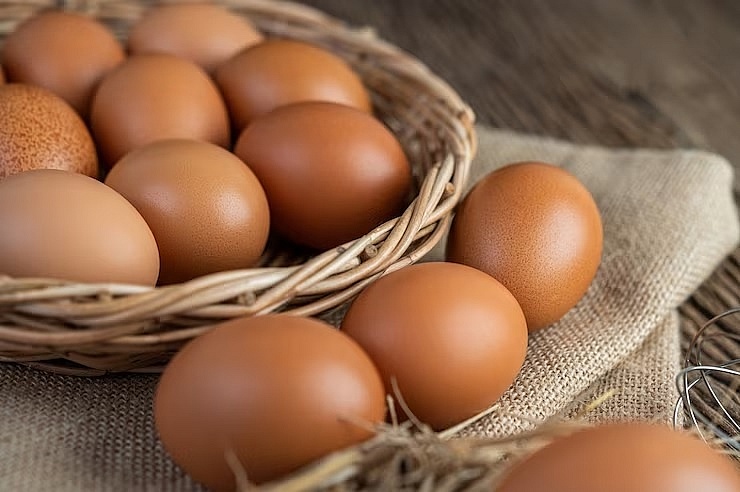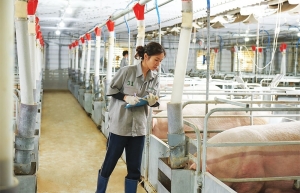Nation looks abroad for livestock boon
The Department of Animal Health (DAH) under the Ministry of Agriculture and Rural Development (MARD) is collaborating with the Mongolian authorities to complete procedures for the export of poultry meat and eggs.
 |
| Nation looks abroad for livestock boon, illustration photo/ Source: freepik.com |
This work was implemented after the two parties’ success in signing veterinary health certificates for exporting animal products between the two countries in November.
Nguyen Van Long, director of the DAH, said, “This is the result of efforts after more than seven years of negotiations following international regulations and practices, as well as implementing the MARD’s direction in the spirit of good cooperation between the two countries.”
“Mongolia’s livestock industry mainly develops nomadic livestock farming under the control of veterinary authorities. Poultry farming in Mongolia accounts for a very low proportion. Therefore, Mongolia is a high-potential market for Vietnamese poultry meat and egg products, which will have many advantages when accessing this market,” Long said.
The DAH has also been negotiating to open more markets in Hong Kong, South Korea, the EU, the UK, and Middle Eastern countries.
In the late months of 2023, the DAH worked with the South Korean food safety inspection team to inspect the processed chicken production chain of Koyu & Unitek Company JSC, and a delegation of British inspectors came to inspect Vietnam’s management system and production of processed chicken for export. The DAH is waiting for reports from the inspection teams.
Agricultural companies are also making efforts to boost the export of animals and animal products overseas by expanding their facilities.
C.P. Vietnam is an example. The company’s CPV Food Binh Phuoc factory complex was put into operation in 2020, and the company exported the first 33-tonne shipment of processed chicken to Japan in October 2022.
Montri Suwanposri, general director of C.P. Vietnam, said, “Japan is a potential market with the need to import about one million tonnes of chicken each year. Along with Japan, CPV Food started the journey to bring Vietnamese processed chicken products to overseas markets.”
The company plans to export to South Korea and in 2024 plan to export to the UK and Europe. “Export have seen good business results, with export revenues in 2023 tripling the figure of 2021. Our complex is aiming to raise its export revenue to $200 million each year from 2024,” Suwanposri added.
Japfa Comfeed Vietnam, Vinamilk, and many other agricultural companies also have plans to foster their exports.
Vietnam exports animal products such as bird’s nests, milk items, feathers, and processed meat and eggs to foreign markets with an average export value of over $450 million per year.
By the end of 2022, Vietnam ranked sixth globally in terms of meat production for pig farming. In recent years, the growth of Vietnam’s pig herd has had great fluctuations in terms of total herd and output.
Long of the DAH said, “Vietnam’s livestock products can access new markets, demonstrating the effective implementation of national plans to build poultry disease-free areas and facilities to promote the export of livestock products. This is also a premise for Vietnam’s fresh and frozen meat and poultry egg products to reach new markets.”
Livestock accounts for about one-quarter of the agricultural sector’s GDP, recording consistent annual growth of 4-6 per cent, according to the General Statistics Office of Vietnam.
Due to the important role of the sector, the government also pays attention to issuing policies to encourage the sector’s development. In December 2023, Deputy Prime Minister Tran Luu Quang approved a project to develop the slaughterhouse industry, livestock processing, and product market towards 2030.
As per the project, a plan has been developed to ensure that the proportion of cattle and poultry slaughtered in industrial concentrated facilities reaches about 60 and 40 per cent, respectively, by 2025, and about 70 and 50 per cent, respectively by 2030.
Vietnam will develop livestock product processing facilities with scale, technology, and management on par with the rest of the world. The project also aims for the export value of livestock products to reach $1.5 billion by 2025 and as much as $4 billion by 2030.
 | Livestock companies latch onto gains involving circular economic model The circular economy is hitting its stride among livestock companies across the country, and are expected to gain increased revenues in the next few years thanks to applying fresh and greener methods. |
What the stars mean:
★ Poor ★ ★ Promising ★★★ Good ★★★★ Very good ★★★★★ Exceptional
Related Contents
Latest News
More News
- Businesses ramp up production as year-end orders surge (December 30, 2025 | 10:05)
- Vietjet chairwoman awarded Labour Hero title (December 29, 2025 | 13:06)
- How to unlock ESG value through green innovation (December 29, 2025 | 10:03)
- AI reshapes media and advertising industry (December 29, 2025 | 08:33)
- FPT and GELEX sign deal to develop blockchain tech for global markets (December 29, 2025 | 08:29)
- Vietnam’s GDP forecast to grow by 9 per cent in 2026 (December 29, 2025 | 08:29)
- Women entrepreneurs are key to Vietnam’s economic growth (December 29, 2025 | 08:00)
- Vietnam's top 500 value-creating enterprises announced (December 27, 2025 | 08:00)
- The PAN Group shaping a better future with ESG strategy (December 26, 2025 | 09:00)
- Masan Consumer officially lists on HSX, marking the next phase of value creation (December 25, 2025 | 13:20)

 Tag:
Tag:




















 Mobile Version
Mobile Version